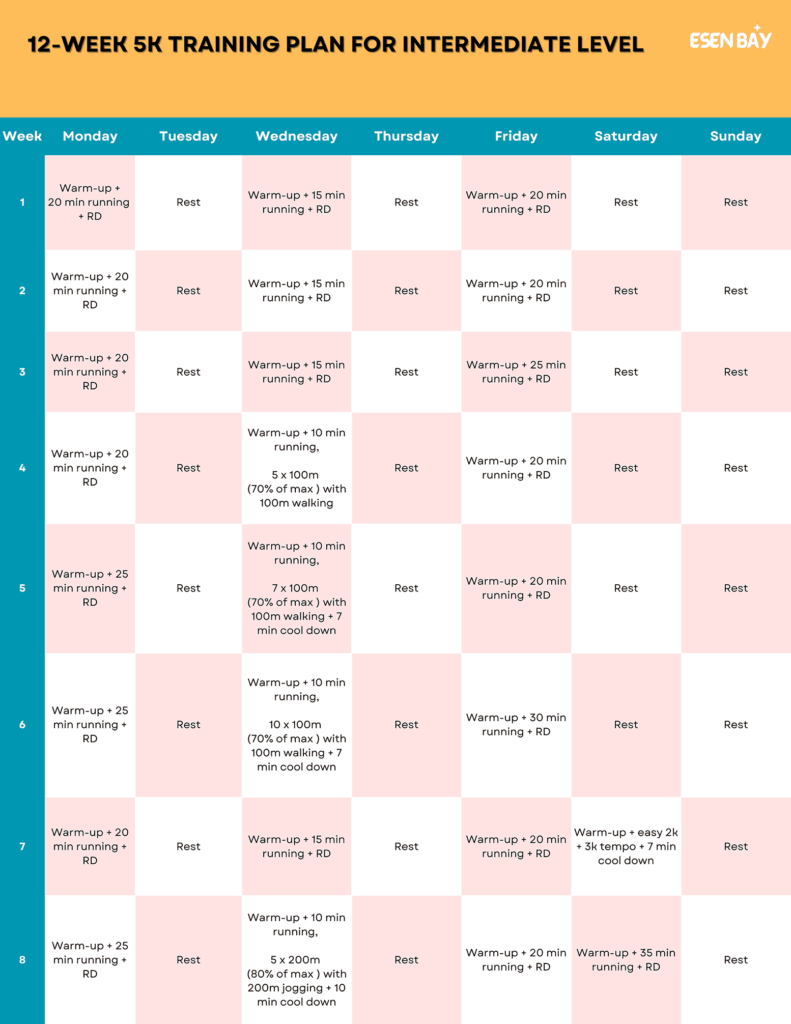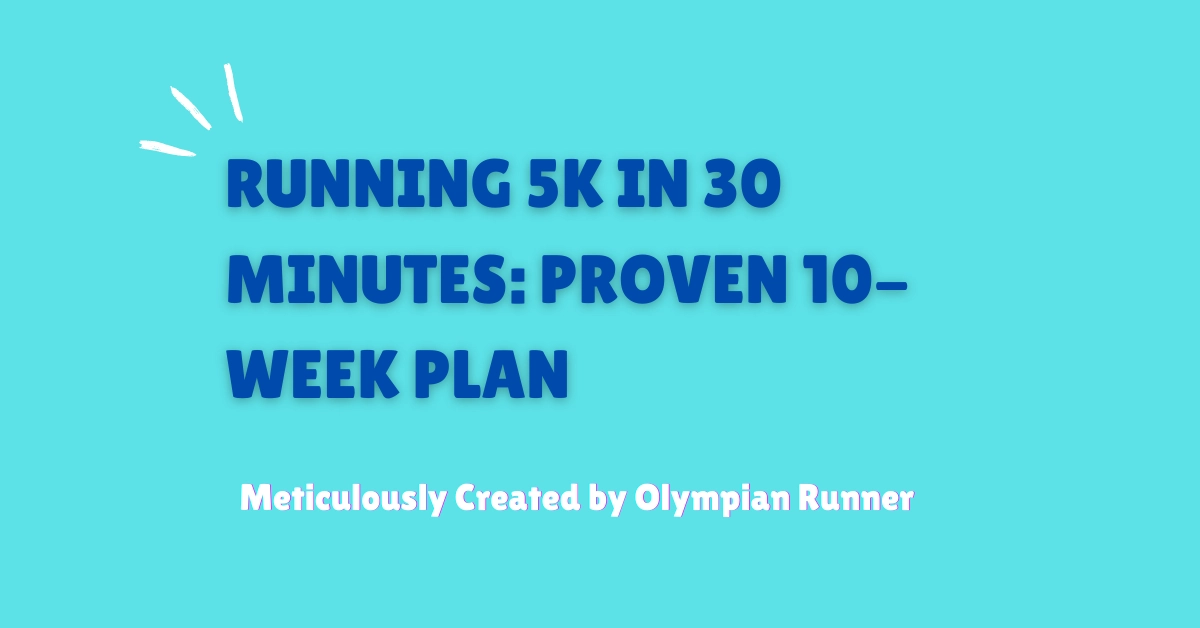Improve your 5K Running
You might have already run your first 5K, focusing only on finishing the race without worrying about your pace. But now, you may be curious about improving your time.
If that sounds like you, our 5K training plan for intermediate runners can help you improve.
We are delighted to share our 12-week plan to help you train for a 5K race.
Our coach, Ilya Tyapkin, made a special training plan, which is suitable for intermediate runners.
5K Training Plan for Intermediate Runners

How Does the Training Plan Work?
Workouts are not done at a constant pace – they involve a mixture of walking and running intervals.
Interval training is fantastic for this type of plan because the variety in effort forces your lungs and heart to adapt quicker, training them better than a constant-pace run would.
Adopting a run/walk approach allows you to run longer than the plan expects you to run constantly. Those walking breaks give beginner runners time to recover a little.
As the running plan progresses, the running intervals get longer, and the walking intervals get shorter until race day, when the goal is to run a 5k without stopping till the finish line!
All runs are performed at a comfortable, conversational pace. Conversational pace – a running pace at which it is possible to say a small sentence without being out of breath!
You will be able to talk without creating much interference with your breathing!
Training Structure Breakdown
Each week combines easy-paced runs, interval training, rest days, and Running Drills (RD) to improve your technique.
Easy runs, typically on Mondays and Fridays, are done at a relaxed, conversational pace to build stamina without overstraining.
Interval sessions, generally on Wednesdays, incorporate short, intense bursts of speed with recovery periods, progressively increasing the distance or intensity to improve speed and endurance.
Saturday’s longer runs are focused on endurance, while rest days provide essential recovery time to prevent fatigue and promote muscle repair. Weeks 10-12 serve as a tapering period, reducing the intensity slightly to keep you rested and ready for race day.
This structure balances training load and recovery, ensuring effective strength and speed building while minimizing the risk of burnout.
What Paces Should I Train At?
For easy runs, aim to keep a conversational pace at about 60-70% of your maximum effort, which helps build stamina while keeping exertion low.
Interval sessions involve short bursts at a faster pace—around 70-80% of your maximum effort for distances like 100m, 200m, and 500m—challenging your speed and endurance without overstraining.
Tempo runs, such as the 3K in week 7, should be at 80-85% of your max effort, feeling moderately hard but sustainable for the distance.
After intense sessions, cool-downs are completed at a comfortable, easy pace, which aids muscle recovery and prevents stiffness.




